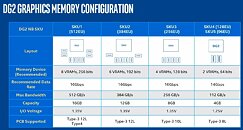Nextorage Announces NEM-PA Series M.2 NVMe Gen4 SSDs
Nextorage Corporation will launch a PCIe Gen 4.0 x4 ("PCIe 4.0") M.2 2280 NVMe SSD "NEM-PA series" for the USA market from March. The products are initially sold on Amazon. Nextorage was established on October 1, 2019, as a company specializing in the memory storage solutions business led by engineers and staff who built on 20 years of history in memory storage at Sony.
The NEM-PA series is an M.2 2280 SSD equipped with a PCIe 4.0 / NVMe 1.4 controller and a 3D TLC NAND, and comes with a heatsink for heat dissipation. The drive achieves sequential read up to 7,300 MB/s, sequential write up to 6,900 MB/s, and random read/write up to 1,000 K IOPS (in a PC environment). The NEM-PA series delivers both high-speed loading and smooth gaming experience.
The NEM-PA series is an M.2 2280 SSD equipped with a PCIe 4.0 / NVMe 1.4 controller and a 3D TLC NAND, and comes with a heatsink for heat dissipation. The drive achieves sequential read up to 7,300 MB/s, sequential write up to 6,900 MB/s, and random read/write up to 1,000 K IOPS (in a PC environment). The NEM-PA series delivers both high-speed loading and smooth gaming experience.

























































